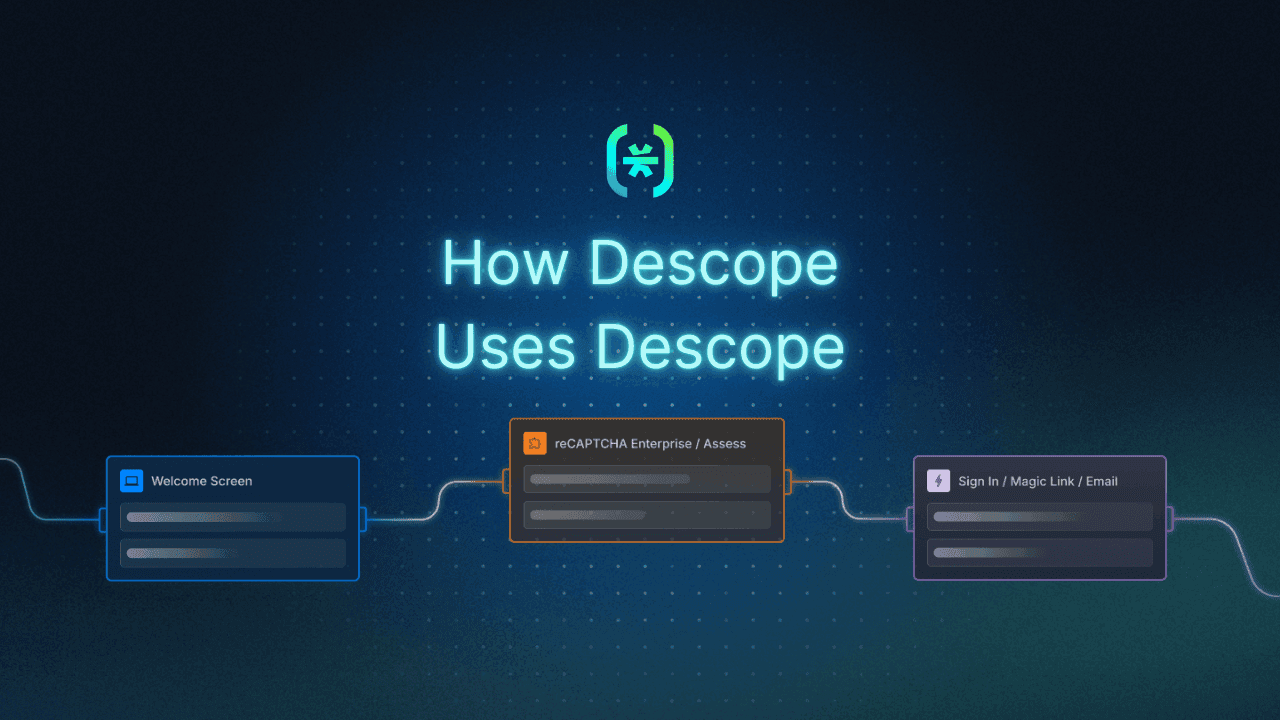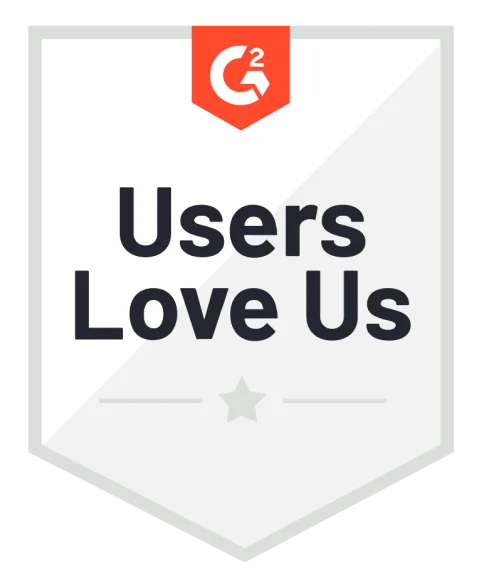Table of Contents
What is CIAM?
Today’s organizations often play a careful balancing act, ensuring sensitive data and operations remain secure without making access too difficult for their end users. As the threat landscape rapidly evolves, traditional identity and access management (IAM) models have fallen out of favor. Take credential-based authentication, for example: of the 600 million daily identity attacks caught by Microsoft in 2024, more than 99% were password-based.
This tension has led a growing number of organizations to invest in dedicated customer identity and access management (CIAM) solutions, a consumer-centric approach to IAM with several similarities and differences.
This guide breaks down the functions of IAM and CIAM, explains their differences, and equips you to determine the right security solution for your business.
Main points
Find your identity focus: Your userbase matters—do your primary needs center on external customers (CIAM) or internal workforce (IAM) authentication?
Balance security with usability: Both approaches protect sensitive data, but differ in how they prioritize user experience versus organizational control.
Choose the right scale: IAM excels at enterprise workforce scenarios, while CIAM can handle millions of customer identities without excessive complexity.
What is CIAM?
CIAM solutions are built to handle authentication, identity management, and access control for your organization’s external identities, which means users accessing your systems outside of your business. These could include customers, free end users, contractors, suppliers, and partners. Examples of CIAM solutions in the real world include:
Authenticating on an ecommerce site (e.g., Amazon) and making a purchase
Accessing a partner portal (e.g., Ashley Direct) to order products for a store
Signing in to a contractor-facing app (e.g., Uber) to receive jobs
At the foundation, CIAM safeguards who has access to sensitive information and verifies identities against stored credentials. Each user will have varying authorization levels.
End users of your systems and apps initially interact with CIAM through the signup process and later on when their identity is confirmed during login. Some CIAM processes include collecting names, phone numbers, emails, and any relevant information, storing that data in a secure system, governing authentication procedures for users (e.g., MFA and biometrics), checking login attempts against stored credentials, and deciding which data different users have access to.
Some CIAM platforms are managed on-premises, but these solutions can be more vulnerable to security challenges and data breaches. Most CIAM solutions are run through Identity-as-a-Service (IDaaS) platforms, which are cloud-based service models revolutionizing the way businesses approach identity and access management.
Also read: Who owns customer identity?
What is IAM?
IAM is an internal-facing identity management solution that functions similarly to CIAM, but it is targeted to users within your organization and serves to improve internal operational efficiency. Implementing IAM solutions helps the IT department both increase security across the organization as well as reduce support costs. Its primary use is to grant employees access to the data that is necessary for them to succeed in their roles and only specific sensitive data is accessible by certain individuals.
Real-world examples of IAM in action include:
Logging in to an internal HR system to request time off or check pay stubs
Accessing sensitive company data stores to perform essential work duties
Signing in to the company cloud via an on-premises workstation
IAM allows you to centrally manage permissions based on who is signed in (authentication) and who has permissions for use (authorization) within certain systems. IAM solutions are also built to handle complex access privileges in order to meet a variety of authorization levels, especially within larger organizations.
IAM systems are similar to CIAM in that they use particular sign-in systems for verification like single sign-on (only requires one sign-on for multiple apps) and 2FA. IAM systems can also be deployed on-premises, but like CIAM, cloud-based IDaaS subscription models offer a higher level of security and data protection.
CIAM vs. IAM: the similarities
CIAM and IAM don’t just share most of their letters. Customer identity and access management evolved from traditional IAM, meaning many of their core characteristics are essentially the same. Below are a few of the key ways in which these two approaches to identity are, at their most basic level, aiming for a similar target.
Protecting sensitive data & resources
While the risks might be different if a breach occurs, IAM and CIAM share a central goal: keep threat actors out, and let legitimate users in. Both approaches are built to shield sensitive information, like financial data or personal details, from cybercriminals and unauthorized users alike. The question IAM and CIAM both ask is simply, “Should you be accessing this?” If the answer is anything but a resounding yes, both management models keep the door tightly locked.
Authorization & authentication
Authorization scenarios in both CIAM and IAM will still rely on concepts and models like the principle of least privilege, RBAC, ReBAC, and ABAC. While CIAM use cases may not seem as high-stakes, it’s still important to give consumers control over how they share resources, like Google Drive access. Meanwhile, the authentication modalities available in both IAM and CIAM aren’t dramatically different; both approaches can leverage traditional credentials, OAuth, passkeys, magic links, all varieties of MFA, physical security keys, and so on.
Availability
CIAM and IAM providers are beholden to different types of users, but that doesn’t mean they can shut the whole system down without repercussions. In fact, in today’s digitally native environment, downtime for both IAM and CIAM solutions can lead to huge losses in sales, productivity, and even customers. Simply put, modern identity solutions are expected to recover quickly and gracefully from performance issues, including scheduled maintenance and upgrades. If a solution has to take the entire system offline for every update, it’s not going to be popular with businesses or consumers.
CIAM vs. IAM: the differences
While quite similar in many ways, CIAM and IAM have their distinct differences, which includes their intended target audience, where the user experience focus is, security and privacy concerns, scalability requirements, and integration needs.
Target audience
The primary target audience of a CIAM is external customers, partners, suppliers, etc. Essentially, anyone who needs to access your systems that are not part of the internal organization interacts with your CIAM system. IAM, on the other hand, targets your internal employees and anyone who is part of the organization, including contractors and other internal stakeholders.
Note that these use cases tend to be fuzzy and depend on the organization. Sometimes, stakeholders like contractors interact with both IAM and CIAM systems, depending on the app they are trying to access.
User experience focus
A major goal of using CIAM solutions on the user experience side is ensuring customer satisfaction. 60% of US-based external users said they gave up accessing an app in the last month because they forgot their password. If the user experience is too difficult, clunky, or buggy, users will drop off and customer satisfaction will plummet.
With IAM, the focus is on employee productivity, as well as lessening the cost and time spent by the IT department for support. IAM solutions typically prioritize security over functionality with not much emphasis on user experience or intuitiveness.
Security and privacy concerns
CIAM solutions are intended to protect external data privacy and address privacy and compliance with a broad array of regulations such as GDPR, CCPA, etc. If you have thousands of users accessing your systems and apps, it’s up to your organization to protect that data from potential breaches and cyberattacks. Otherwise you will be liable for your users’ sensitive information being compromised. CIAM protects customer information and manages consent in a way that builds trust and complies with legal requirements.
IAM solutions center more around internal data protection, safeguarding your organization from compromising sensitive data that could put your company and employees at risk. While the same data regulations come into play with IAM as well, the stakeholders being protected differ.
Scalability requirements
Both CIAM and IAM prioritize the ability to scale. On the CIAM front, the focus is on supporting consumer scale, which often involves managing millions of identities and handling peak loads during high-traffic periods without sacrificing the quality of service. Scalability is crucial for maintaining a positive user experience and accommodating business growth.
IAM solutions still prioritize enterprise scalability but at a slower pace and smaller scope compared to consumer-facing solutions. IAM usually manages employee and contractor identities, including onboarding and offboarding processes, across various locations and departments.
Integration needs
CIAM requires seamless integration with a wide range of customer-facing applications, from ecommerce platforms and bot protection to CRM systems and localization suites. Identity data can thus be used to drive business outcomes, like personalized marketing campaigns and tailored customer experiences, while bringing capabilities of all business and security tools to bear in the user journey.
On the other hand, IAM generally integrates with enterprise systems such as HR databases, email servers, and network infrastructure to automate the provisioning process and ensure consistent application of security policies.
Feature | CIAM (Customer IAM) | IAM (Identity & Access Management) |
|---|---|---|
Target Audience | External users (customers, partners, citizens) | Internal users (employees, contractors) |
User Experience Focus | Customer satisfaction and engagement | Employee productivity and efficiency |
Security and Privacy Concerns | Protecting customer information, managing consent, compliance with external regulations (GDPR, CCPA) | Protecting internal data, enforcing access policies, and monitoring for security threats |
Scalability Requirements | Must support consumer scale with potentially millions of identities, handle high traffic volumes | Designed for enterprise scale, managing thousands to tens of thousands of identities, within organizational boundaries |
Integration Needs | Customer-facing applications and services (bot protection, CRM, localization) | Enterprise systems (HR databases, email servers, network infrastructure) |
Is CIAM or IAM right for you?
The simple answer to this question is that CIAM is for external users—namely, customers—and IAM is for internal users, like employees.
In essence, CIAM is right for you if:
You prioritize user experience and security together
You want to optimize identity flows for better results (i.e., conversions)
You want to minimize complexity as scale increases
Your developers value an experience that caters to their needs
You need more nuanced security options
IAM is right for you if:
Your priority user base is internal and undemanding
Understanding user journeys isn’t important
You don’t anticipate larger scale, and don’t mind complexity if you do grow
Your developers don’t mind more technical tooling and have time to spare
Security options can be flatly enforced with little adaptability
In some cases, organizations might need a hybrid solution that has elements of both CIAM and IAM, or they may need dedicated solutions for both these aspects. This is particularly true for organizations that operate large consumer-facing applications but also maintain significant internal IT infrastructure for their workforce. For example, while banks need robust CIAM, they also require IAM.
Let’s take a closer look at the central factors that determine which of these approaches is best for your specific context.
User experience (UX)
Not all external users are customers. They could be contractors, partners, brokers, wholesalers, or providers. Does that mean you can skimp on the UX if your users have no other option? Definitely not. After all, it’s possible to drive your contractors and partners away with tedious and disruptive software.
But when considering the tolerances of different user populations, it’s critical to remember that customers have vastly different expectations of a platform offering products or services than external partners might have for a work-centric system. A contractor will put up with a rough-around-the-edges login experience, but offering the same to a customer could cost a sale.
Identity flows & analytics
The way a user navigates your identity ecosystem matters much less in internal scenarios; if they get where they need to go (and only where they’re allowed), that’s good enough. But with customers whose identity journeys can make or break experiences, it’s crucial to understand where drop-offs occur, which auth methods result in more conversions, and what their preferences are even before they sign up for an account.
In an internal context paired with IAM, features like anonymous user tracking and verified guest checkout simply aren’t a factor. These are tools you simply wouldn’t need under any circumstances, but for B2C companies, they can be pivotal business enablers. Similarly, A/B testing identity flows, drawing out actionable insights with data, and refining journeys for better revenue—only a CIAM solution is specialized enough to offer these critical conversion optimizers.
Size vs. scale
We talked about the need for enterprise and consumer scale in various scenarios earlier, but there’s another dimension that’s often overlooked: size, or the way that scale affect how agile your solution can be. Ideally, your identity solution will be able to scale for the user base of tomorrow, whether that’s thousands of employees or millions of customers. But while that scale increases, the size and complexity of your solution tend to also skyrocket.
This is why a CIAM solution built from the ground up to unify and simplify identity can be a game-changer. Instead of bolting on more and more functionality to support a burgeoning user base, you’ll retain the same cohesive management tools. As IAM solutions scale up, they often become bigger, unwieldy, and frustrating for devs to maintain.
Developer experience
While the explosive size of a solution is often overlooked by organizations comparing IAM and CIAM, developer experience is an afterthought in virtually every genre of tech acquisition. Yet, it can mean the difference between spending months to implement a new auth method versus tackling it in a few weeks or less.
In IAM solutions, developer experience can vary wildly: one offering might boast a high-quality dev environment with dashboards, management tools, and policy engines; another might be barebones with little more than a blank canvas.
CIAM solutions tend to place a high priority on developer experience when compared to their IAM counterparts. This leads to dev-first features like workflow-based flow editors, expansive SDKs, robust APIs, and diverse connector ecosystems.
Security features
Another important factor to consider is whether you are currently able to meet security and compliance requirements. Your organization may prioritize one or both of these options, but specific regulations and laws also need to be abided by. For example, PCI DSS 4.0 will require you to enforce MFA for all users accessing certain resources. With customer-facing applications, you might use bot protection to reduce the risk of credential stuffing. While both CIAM and IAM approaches can deliver virtually any auth method and security option, the way they’re presented to the user can vary significantly.
Ultimately, the security options you pursue (and how they’re implemented) should be cognizant of the audience and use case. Picture an average customer logging in to their banking app. They’re willing to put up with a little friction because they know it’s safeguarding their accounts. But users are unsurprisingly less understanding when they’re hit with MFA prompts just to watch a TV show. This is the perfect scenario to use adaptive MFA, a flexible security feature that only triggers additional security if the login looks risky.
Drag & drop CIAM with Descope
Whether prioritizing internal efficiencies and security with IAM or aiming to enhance customer engagement and satisfaction through CIAM, selecting the right solution requires a strategic approach tailored to your organization’s unique needs.
For those looking to refine their external user interaction and security, Descope offers a comprehensive CIAM solution that simplifies the complexity of user authentication, onboarding, and data protection.
With Descope's no / low code CIAM platform, organizations can not only streamline the user experience across customer-facing applications but also strengthen their defenses against bots, credential stuffing, and password-based attacks. Our visual workflows help hundreds of organizations implement CIAM quickly as well as adapt to changing user needs without modifying the codebase.
Sign up for a Free Forever Descope account to get started on your CIAM journey! Have questions about our platform or an active enterprise project? Book time with our team.








